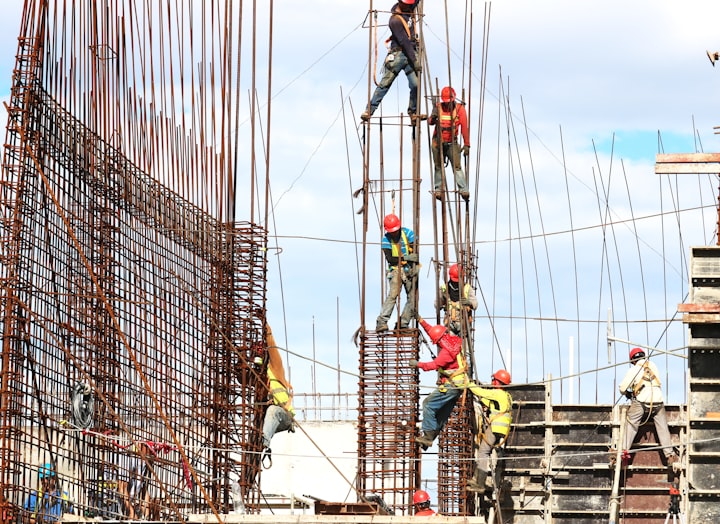New York City, the “City That Never Sleeps,” is a dynamic, ever-changing metropolis. Over the centuries, its skyline has become one of the most iconic in the world. The city’s construction industry has been pivotal in shaping this landscape, evolving from rudimentary structures to towering marvels of modern engineering. Today, the industry remains a driving force in New York’s economy, with constant growth and innovation pushing those boundaries. In fact, though, the road to success wasn’t quite so smooth. We shall draw on the key highlights in this history of New York’s construction industry, the technological and architectural changes that have shaped its growth, and inspired some of the greatest solutions that the challenges these cities uniquely pose bring about. From its modest origins to the high-tech developments of today, the construction industry in New York has undergone a dramatic transformation.
The Foundations: Early New York and Its Construction Roots
New York City’s construction story began long before the steel giants of today towered above its streets.
In the early 1600s, when Dutch settlers first established the colony of New Amsterdam on the southern tip of Manhattan, construction was a rudimentary affair. Wooden homes and simple structures dominated the landscape, and the primary building materials were timber, brick, and stone. The first major construction in the city was Fort Amsterdam, built to defend the young colony from foreign powers. In the course of the 18th century, brick and stone became increasingly common as materials. City Hall and the first churches were essential aspects of public building in the city.
By the late 1700s, New York had become an important port city, and the influx of immigrants created an ever-growing need for housing, fueling growth in construction. It was, however, only during the 19th century that the city really began its transformation into the sprawling metropolis we recognize today. The Rise of Skyscrapers: The Industrial Revolution and the Birth of Modern Construction The real turning point of New York’s construction history was in the late 19th century, when steel-frame construction became possible. This led to the construction of buildings that were much taller and stronger than ever before had been. Hitherto, buildings had been restricted in terms of vertical height because of the abridged limitations of masonry construction. Steel and iron in construction coupled with the advent of elevators changed the skyline overnight.
Completed in 1902, the first major skyscraper in New York is the Flatiron Building. This triangular building, which once stood as the tallest in the city, marked the beginning of domination by the city in vertical architecture.
The skyline of New York would only grow better as steel and concrete allowed for the construction of higher buildings, culminating in the completion of the Chrysler Building in 1930 and the Empire State Building in 1931. The Empire State Building was one of the highest structures in the world when it was first completed in 1931 and a symbol of New York as a site of innovation and ambition.
The same period witnessed the emergence of such famous urban planning feats as Central Park and the construction of New York’s first bridges, the Brooklyn Bridge among them. The technological advance coupled with the sheer extent of New York’s urbanization meant that by the beginning of the 20th century, the city had started to take the shape of the metropolis that we know today-craned buildings, vast infrastructure, and a crowded population-all clamoring for unending construction. Post-World War II Boom: Expansion and Rebuilding of the City
After World War II, New York City experienced another significant period of construction growth.
Most of the city’s development had been put into hold by the war, but the construction boom in both commercial and residential construction during the postwar years marked the period.
The construction industry thrived between the 1950s and 1960s, with high levels of expansion driven by the recovery of the city and expanding economy. The building of residential high-rises, especially in places like the Upper East Side, and new office towers in Midtown, transformed the city’s landscape even further. This period was marked by extensive infrastructural development. Mega-projects like the construction of the Lincoln Center for the Performing Arts and the subway system expansion were a demonstration of New York’s commitment to urban renewal. The architectural landscape of the city now geared toward modernist design, with glass, steel, and concrete, replacing old styles. While much of the construction of the time was geared toward growth and development, not all construction took place in order to grow. Much of New York City’s aging infrastructure and crumbling buildings were pulled down in the 1960s and 1970s, making room for new, more modern buildings. Yet demolition of old buildings also resulted in the loss of much of New York City’s historical architecture, a trend that led to many discussions about preservation and the preservation of architectural heritage.
The Turning Point: The 1990s to Early 2000s – Revitalizing the City
The 1990s were a time of transition for New York’s construction industry. The city had experienced decades of stagnant economy and crime, entering a period of revitalization. Great urban renewal projects then took place across the SoHo and Tribeca neighborhoods, downtown along the Financial District as well as high-end condominiums, hotels, and office buildings.
One of the most important events in the last couple of decades in New York’s construction history is from 2001 with the terrible collapse of the World Trade Center from the September 11 attacks.
Construction in New York, of course, then tried to rebuild the site after such a catastrophe.
The World Trade Center complex development, including the One World Trade Center, known as the Freedom Tower, is quite a symbol of resilience and determination. This is not just an edifice but a statement in the overall quest for the growth and coming up of the city from the ashes. New New York: Innovative Technology and Green Architecture The New York construction landscape is characterized both by advanced technology and an increased interest in sustainability. Today, New York boasts some of the most complex and ingenious construction projects undertaken anywhere in the world. The city’s skyline remains dynamic, with the development of significant new construction icons, including the Hudson Yards, One World Trade Center, and many luxury residential towers that reflect the future of New York City.
Technology has been highly influential in changing the construction industry. Building Information Modeling (BIM) shows a set of promises such as coupling with robotics, and advanced materials such as carbon fiber structures and 3D-printed structures being used in New York construction projects. These enable not just increased efficiency in construction but also improved safety as well as the direct reduction of costs.”.
Another growing focus is sustainability. New York is doing a lot to promote green construction, with new constructions including energy-efficient systems and solar panels, sustainable materials, and so on. New York has set ambitious carbon-reducing goals, and the construction industry plays a crucial role in fulfilling this goal.
Looking Forward: The Future of Construction in New York
Continued growth in New York will mean continued challenges for the construction industry. Population growth, environmental concerns, and the need for affordable housing will drive new development projects. Advances in construction technology will play a critical role in addressing these challenges, as well as making the city’s buildings safer and more sustainable.
From history-worn landmarks to the towering skyscrapers with breathtaking views of today, New York has always challenged what is possible with its construction industry. The future holds even more promise as the city makes way for a growing population and still captures the character of this influential megalopolis.
In conclusion, New York City’s construction industry is richly diverse and complex, with history that has cradled this identity to date.
Starting from wood-wielding 1600s to the towering glass-and-steel machines of today, New York’s construction story has been a tale of creativity, technological advancement, and survival.
As we look to the future, the city’s construction industry will undoubtedly continue to evolve, leading the way for other global cities to follow.

